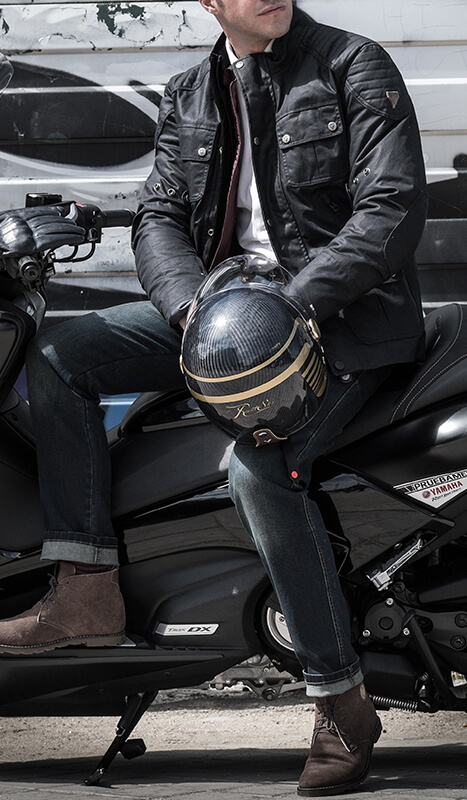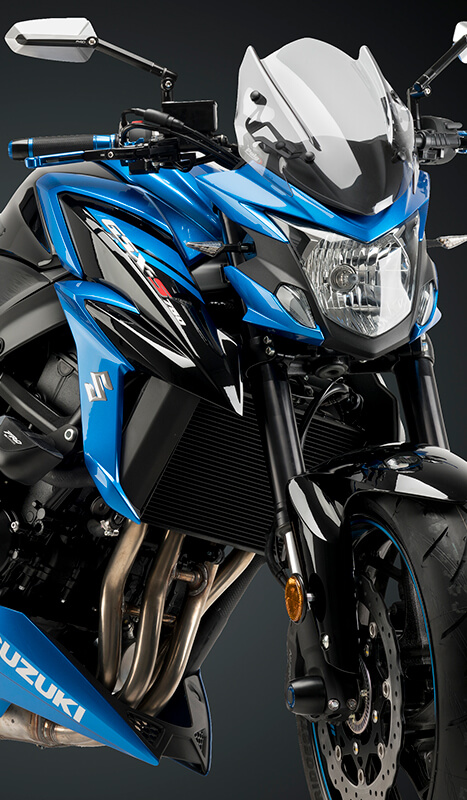Hello everyone and welcome once again to the acmotos blog.
The grips are one of the parts of the motorcycle that most often people decide to change, either for aesthetics, wear or grip.
And it is one of the most economical accessories you can buy and give your bike a more personal look to match the character of the driver.
As always, we will discuss all those aspects that we believe you should take into account before choosing a particular grips.
Features to consider
Before rushing to buy the grips that seem most beautiful to us, we should keep in mind that not everything is about appearance.
There are certain aspects that you must take into account before buying them, in this way you will avoid disappointments and incompatibilities.
These characteristics are the following:
- Type
- Open / close end
- Dimensions
- Composition
- Texture
- Hardness
Here we are going to explain you in a simple way each of these points and why you need to take them into account.
Grip type: with or without gas rod
When we talk about the type of cuff, we mean what it what it comes with.
There are mainly two types:
- Without gas rod
- With gas rod included.
The gas rod is the mechanism that stretches the throttle cable, and therefore accelerates your bike. If you only change the tires, it implies that you are leaving the stock reed of the bike.
The most common is that the grips come without the gas rod, for example the typical grips that are completely made of rubber:
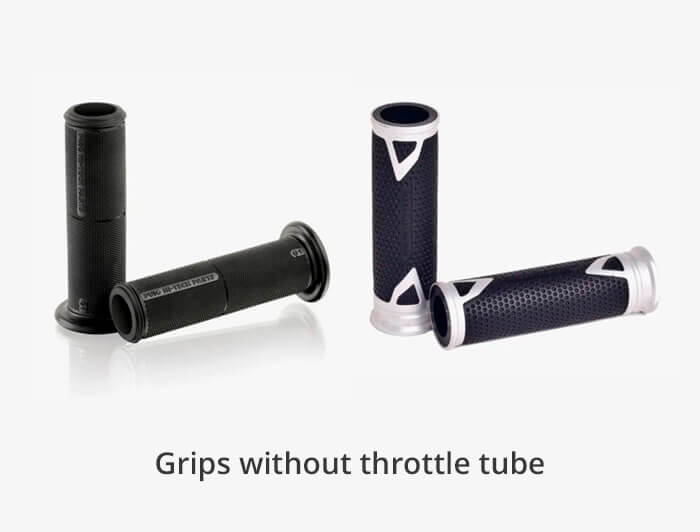
* In the example we see the Basic model and the Radikal model from Puig, both without gas rode included.
However, other models do come with the gas rod included:
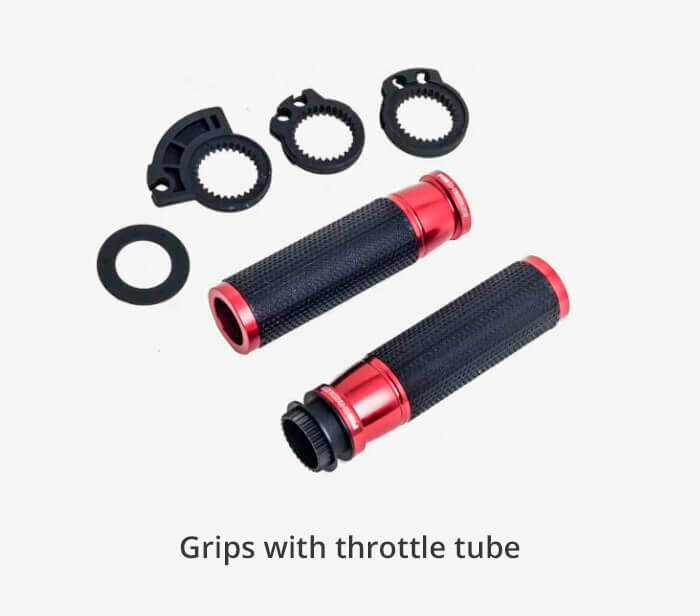
* In the example we see the Ascent model from Puig, which comes with a gas rod and adapters included.
Normally this type of grips come with adapters included, so that they can be mounted on most motorcycles. Even so, it is important to take this into account, as choosing the wrong type will make the process more difficult than it should be, and you may not be able to mount it on your bike.
Attention: : If your bike uses the "Ride by wire" gas system, you will not be able to mount grips with gas rod, since your bike does not have a conventional rod with cable, but it is an electronic gas. In this case, you will only be able to mount grips without a throttle rod.
Our recommendation is that, if you don't want to complicate your life too much, choose grips where you only have to change the rubbers.
Open or closed end
There are two types of grips on the market, with open or closed end.
In the open end ones the cuff is shaped like a hollow cylinder inside and open at both ends, while in the closed end ones they are covered on the side where the counterweight goes.
The closed end ones are useful in case you do not want to mount counterweights, which we do not recommend at all because of the role they play in stabilizing the handlebar.
But it can also be the case of motorcycles or scooters that come standard without counterweights (or these are inside the handlebar), in that case you should choose grips with closed end.
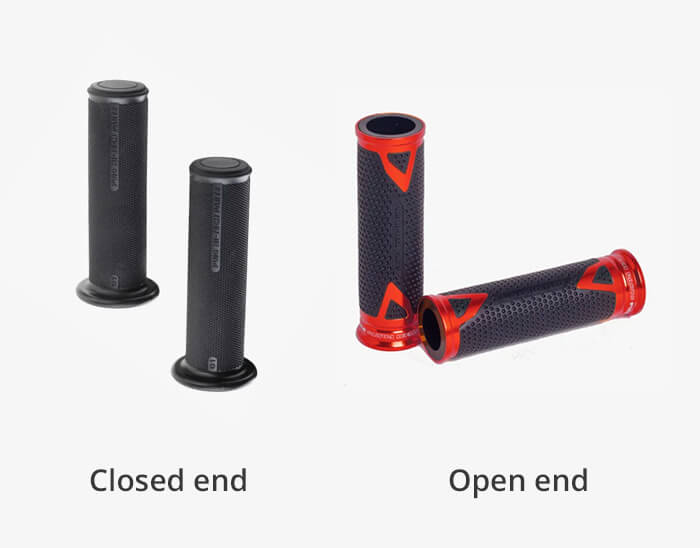
* In the example we see on the left some closed grips, but semi-stamped to open easily, and on the right some open grips.
Measurements: 123mm or 119mm grips
The sizes used on the grips are fairly standardized. All grips are usually 119mm long, but this is not always the case.
There are motorcycles that mount 123mm grips, in which a few millimeters less can mean that we cannot adapt them correctly to our motorcycle.
What we recommend is that you measure the original grip and base yourself on that measurement to acquire the new ones.
In terms of diameter it must be said that practically all the grips come for 22mm handlebars and in turn virtually all handlebars on the market (both original and aftermarket) are 22mm in diameter, so there will be no incompatibility in this regard.
Note:If you are going to change the handlebars, check if the new one comes with the holes for the light clamp, as this will show you the length of the grips that can fit. In the case of Puig handlebars, they come without holes, so you will have to make them yourself, being able to adapt the size of cuffs you want.

Composition
We are already entering a more personal field, since this is not going to mean incompatibilities, but is a matter of likings.
The composition of the cuff is based on the type of rubber used and the materials of which it is composed.
The basic grips are made entirely of rubber, while the top-of-the-range ones are made of aluminum with rubber inserts.
In this aspect you should keep in mind that it is the rubber that really grips, not the aluminum, so you should make sure that most of the contact is rubber.

* In the example we see, in order, a completely rubber grip from Customacces, a rubber one with Domino plastic inserts and an aluminum one with a rubber grip.
Texture
As for the texture we have more of the same, each one will choose the one they like the most.
When we say texture we refear to the roughness of the rubber.
Some are quite smooth, like Domino's XM2 and others have a very pronounced texture like the Racing, also from Domino.
Texture affects both feel and grip. The feel is usually indifferent due to the use of gloves on the bike, but the grip is more important.
The rougher the cuff, the better the grip. Moisture or sweat are two factors that can cause a smooth cuff to slip in your hand, but don't be alarmed, as this is largely minimized with gloves.
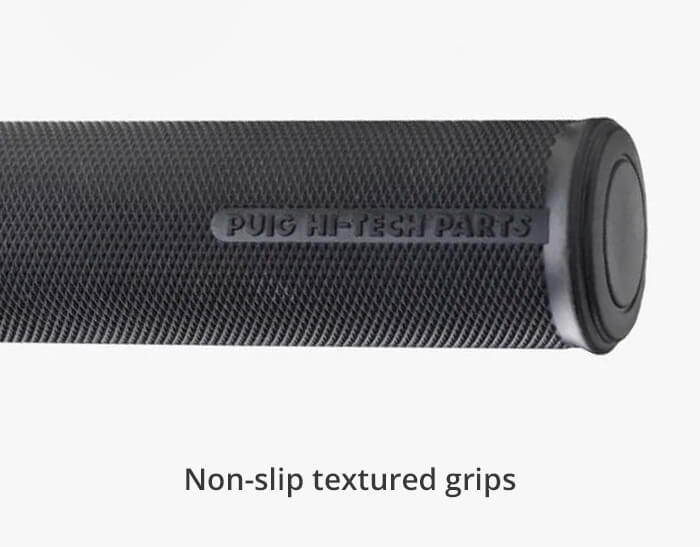
Hardness
The last relevant point is hardness.
The hardness directly determines the grip and wear of the grip.
A hard grip will grip the hand slightly less than a soft grip but will withstand wear and tear better.
Conversely, a soft grip will have a better feel and grip but will wear more quickly.
Again, it is a matter of taste and use. If you want to ensure a good grip and you don't mind them wearing out faster, opt for soft grips. If, on the other hand, you want grips that will last for many years without deteriorating, opt for hard grips.
Some manufacturers give several hardness options for each model of the cuff, for example in the Standard model from Puig.
Is it worth changing the grips of the motorcycle?
Of course, depending on the reason why you are going to change them, it will be completely justified. The most common reasons are:
- The original grips are already very worn.
- You have had a fall and the standard grips have been scarred or broken.
- You simply want to customize your bike to your style.
Changing the grips is a fairly simple task, however it is essential to follow these instructions to avoid problems when mounting them.
We hope you have found useful these guidelines and tips that we have given you, if you think that some feature is missing or if you have any questions please leave us a comment and we will gladly answer you.
